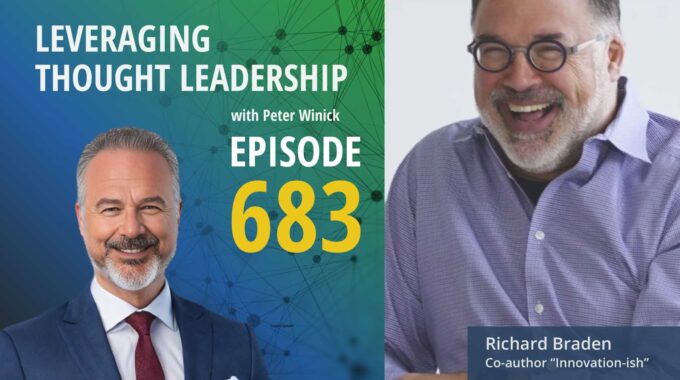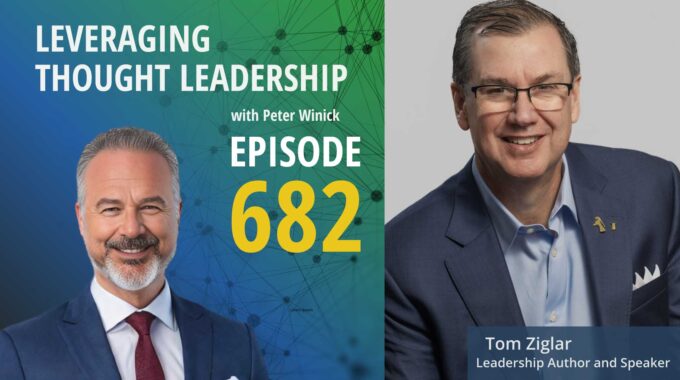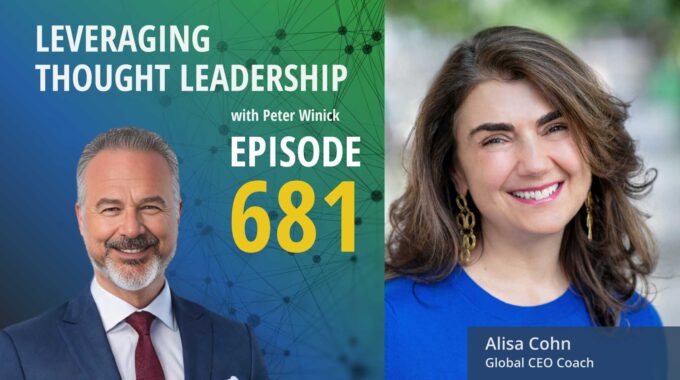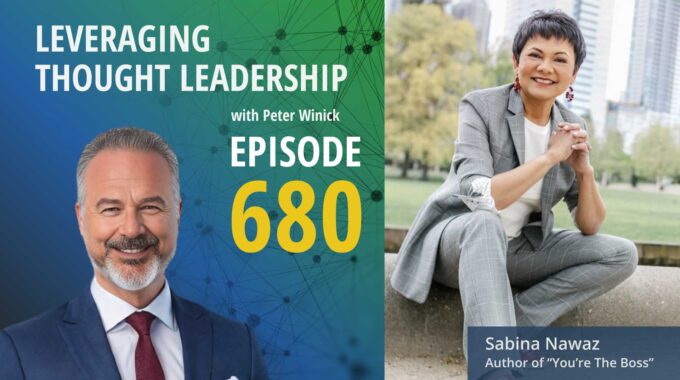A Hybrid Model That Blends Capability Building with Business Outcomes This episode explores how to…
Head, Heart, Gut: Aligning for Success | Judy Wilkins Smith
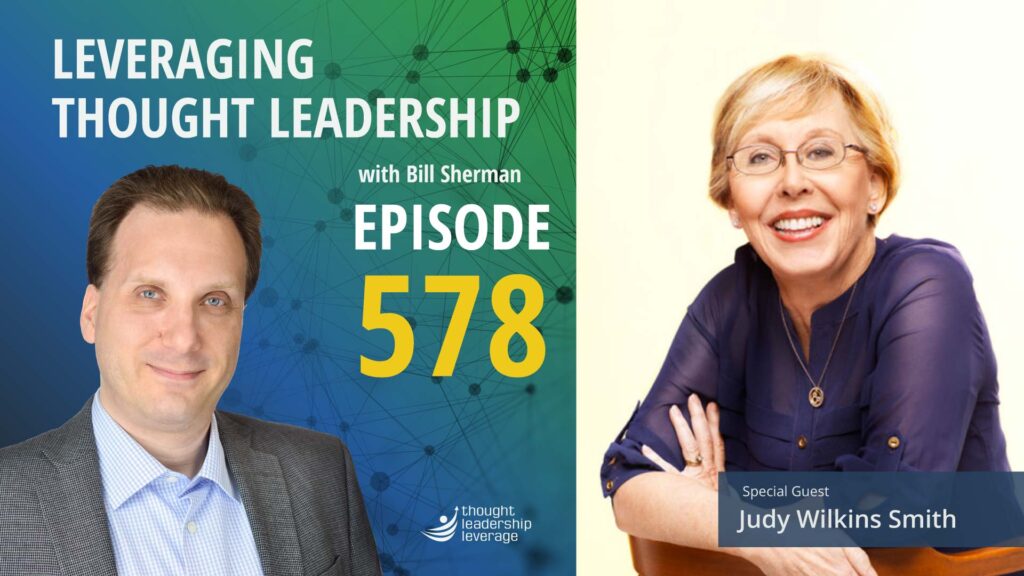
Inspiring Leadership: Moving Beyond Victimhood
A conversation with Judy Wilkins Smith about helping others find the biggest version of themselves and aligning your Head, Heart, and Gut for success.
In this episode of the Thought Leadership Leverage podcast, host Bill Sherman sits down with Judy Wilkins Smith, an executive coach and trainer specializing in Systemic Constellation Work. Judy has recently released her second book, “The Hidden Power in Your DNA: How to Use Genealogy to Explore Ancestral Patterns & Transform Your Life.” Dive in as she shares insights from her transformative journey and groundbreaking work.
“Decoding Your Emotional Blueprint,” emerged from personal tragedy. After losing her father, she turned to writing to channel her emotions. Her background in award-winning poetry helped her craft a powerful narrative that connects deeply with readers. That ability to connect and evoke emotion can be seen in Judy’s Systemic Constellation Work. Bringing hidden patterns to light by Using 3D tools like paper and props, she helps clients visualize and understand their obstacles. This method allows for a tangible shift in perception and strategy.
Judy talks about the humble journey of becoming the biggest version of oneself. It’s about taking full responsibility for personal growth and inviting others to join the adventure. She emphasizes the importance of growth feeling like play rather than a burden. She uses these same ideals when helping clients see the biggest versions of themselves. In her coaching Judy prefers inviting clients to explore their potential rather than pushing them. She’s keenly aware of hesitation, understanding it as a form of self-protection that can be transformed into a strength.
Judy reflects on her own journey with undervaluing her work. Coming from a culture that shies away from ambition, she struggled with Imposter Syndrome. Her growth involved recognizing her worth and pushing past those limiting beliefs.
Judy discusses her “Head, Heart, and Gut” framework, which combats negative self-talk and aligns these three powerful centers to manifest success. When your heart, head, and gut are in sync, you unlock your full potential.
Looking ahead, Judy sees the need for leaders who inspire rather than push. She emphasizes moving beyond victimhood, using personal challenges as a catalyst for remarkable achievements.
Three Key Takeaways:
Transformative Power of Ancestral Patterns: Judy Wilkins Smith’s work with Systemic Constellation reveals how understanding and addressing ancestral patterns can transform lives. Her books, “Decoding Your Emotional Blueprint” and “The Hidden Power in Your DNA,” explore how genealogy and systemic work can uncover hidden influences and provide pathways to personal growth.
Aligning Head, Heart, and Gut: Judy emphasizes the importance of aligning one’s head, heart, and gut. By overcoming negative self-talk and ensuring these three elements work together, individuals can achieve conscious manifestation and unlock their full potential. This alignment is crucial for personal and professional success.
Inspiring Rather Than Pushing: Judy advocates for leadership that inspires rather than pushes. She highlights the significance of inviting others to explore their potential and grow in a supportive environment. Her approach focuses on turning challenges into strengths and moving beyond a victim mindset to achieve remarkable outcomes.
Transcript
Bill Sherman Here’s a question. Why did you write your nonfiction book? I’ve asked that question of hundreds of authors, and I’ve heard a wide variety of answers. Some authors want to build a personal brand. Business minded people want to generate leads and opportunities from their ideas, and plenty of academics write books to meet a tenure requirement. There’s no single answer that covers every author. Today, I want to explore a category of answer that I really haven’t touched on much in this podcast yet. Some authors tell me they had a book inside of them, or even multiple books inside of them that just had to get written. My guest today is Judy Wilkins Smith, an executive coach and author. In today’s episode, we’ll explore how one of her books came to be, how she got pulled into executive coaching and becoming the biggest version of yourself. I’m Bill Sherman, and you’re listening to Leveraging Thought Leadership. Ready? Let’s begin. Welcome to the show, Judy.
Judy Wilkins-Smith Hi, Bill. It’s lovely to be with you.
Bill Sherman So first off, congratulations on the launch of your second book. And I want to dive in into some of your work around the book and thought leadership. When we were talking earlier, you told me a story about how this book came to be, and you said it was either right or rage at the heavens. Can you unpack that for us?
Judy Wilkins-Smith Yeah. So the book that we’re talking about, the Decoding Your Emotional Blueprint. Yeah, that was one right off to my dad had been killed. And, it was a question of, as you say, right? Or rage at the heavens. And I needed I really needed to do something that meant something I wanted to. It was either that or I was going to go under. And I’m typically don’t like going under. I think it was one of those. It was also one of those pivotal moments where you know that you’re either going to drown or you’re going to fly, and it’s called pick one.
Bill Sherman So had you considered yourself a writer beforehand? Had you written before or why did your brain go okay? Writing is my answer rather than raging at the.
Judy Wilkins-Smith You know, I say no and I say no with a giggle. But at the same time, I had actually done a lot of award-winning poetry, and I hadn’t thought about that. So, yeah, it was it was really I didn’t know what to do. And the one thing that I felt like would do something was writing. Could I write my way out of what I was doing? That wasn’t this book. That was what set me on the journey of this work.
Bill Sherman So. And I want to stay on the poetry for just a moment, because I think there’s an interesting connection between the work of poetry, which is distilling a moment or an idea or feeling into its really finest essence, and making that visible with often the fewest words possible, sometimes a complicated form, but really it’s a delicate art form. And that’s. I, as I think about it, really a great training ground for thought leadership. How do you make complex ideas accessible?
Judy Wilkins-Smith Yeah. And you know, you that’s it. That’s a great question. I know for me not this is gonna sound odd, but bear with me. I know it’s always been about can it be sticky and grime? And for some reason, that’s got to rhyme. It’s almost like doing a dance. If I can’t get the tune to rhyme in a way that really hits home, it’s. It feels. And this is going to sound weird, too. It feels incomplete. It’s like when I was small, when I used to draw pictures. And heaven help us, my art is dreadful, but my pictures when never complete unless they had yellow in them. So it’s kind of there a pieces that that stick and for me, it was also very much about not making the simple complex but about making that understandable. So people would really get it and have a feeling and have a shift. So. Yeah.
Bill Sherman And. I think you could take some of those pieces of. How you described poetry. The art of crafting painstakingly every word to get that idea, that feeling across often to the work of thought leadership and communicating an idea where you’re trying to make something visible to people that they may not have been thinking about before.
Judy Wilkins-Smith So I love that. But what you’ve now touched into, straight into is with systemic work and constellations. I do, because that is literally about taking the invisible and making it visible in the unconscious and making it conscious. And so of course, working in 3D, which is my favorite thing to do, I can take something that people really struggle with dimensionally by using either pieces of paper or library percentages and, and that quickly. They know what it is they’re seeing, where the obstacles are, how we can shift them, who’s engaged, who is not engaged. So that’s my favorite paper. It is it’s like poetry in motion.
Bill Sherman So. One of the other pieces that we had a conversation about was this desire to become the biggest first version of yourself. Let’s start there for a moment. What does that phrase mean to you? The biggest version of yourself. And then we’ll go from there.
Judy Wilkins-Smith Okay, so for me it means and I’ve said this before, it’s the happiest day of your life. It’s the first day that you agree to be fully responsible for growing the biggest version that you can. And now you’re in service of the universe. And for me, it was if I’ve got a brain and I got a life, let’s put them together and let’s see how far we can push. That’s not just for me, because I was also born with a gene that almost want to say, I’ve got to share it. And that started little pieces of chocolate, little things at home. If I’ve got it, I want to share it. So how do I push it as far as I can? And then how do I say to everybody else, hey, come play.
Bill Sherman So. What does that hey play? Look like both for you. And then we’ll take a step into your coaching.
Judy Wilkins-Smith So what does complain look like to me? It’s really I know, I know that you have a really big version of yourself in there. Let’s have a look at that because you’re going to love it. We’re going to go beyond brick walls and show you the other side. So come Play is really the invitation to grow without a feeling like it’s a really big job. Instead, it’s an adventure. And for me, it’s all about adventure. I love adventure.
Bill Sherman And so then that leads into the invitation to your work and coaching consultant. Right.
Judy Wilkins-Smith Right, right. So yes, I think for me with all of my clients, when that sit down and I work with them and we work through the themes and figure out what we’re doing and what they want to learn. I can already see what the biggest version is that I can see. And so I’m excited and I’m really ready to take the journey with them. I’m also extremely mindful of dancing at their pace.
Bill Sherman See more on that. See more on that robot.
Judy Wilkins-Smith Yeah. So what I find often with, with coaching is it’s no good pushing. Inviting is really good. Pushy is not helpful. But I also watch because as I’m working with people, I noticed that there may be a hesitation or a pullback, and I’m interested in that. What was that? What was that about? Talk to me. So I watch I listen very carefully. I’m listening to language. I’m watching body. And. And if they want to slow the pace down or if there’s a I can’t I want to know what that I can’t is because I can’t is protecting something. And now I’m really interested to know what is it protecting and how do we get what it’s protecting a place. And then how do we turn that into a strength and a point of championship?
Bill Sherman So that ability to alter your pace as well. Foundational to coaching, but also foundational to the work of top leadership because it’s easy to talk over your audience, right. And so here’s my question. What do you do to. To not only read. When to speed up and slow down. Then how do you do that yourself? Because I can see sometimes that it’s natural to be one, two, three, four. Let’s go. Because, you see, we’re the biggest version of themselves could be. And it’s like, oh, come on, let me grab you by the shirt collar and let’s just go.
Judy Wilkins-Smith How do you act like this? So I think I think there’s one very important one for me. I look to see immediately. Are you an A-Z thinker or are you an ABCd thinker? Each is equally important. If you’re an A, B, C, d, e, I need to let you process what’s happening, and I need you to tell me what’s happening. If you’re an avi, we can move a little quicker. But at the same time I watch face, I watch body, I watch d I watch great I lot. And I watch Microexpressions. So the minute I pick them up, I’m curious and I’ll stop what I’m doing. Or if I’m if I’m working in a large group, if I see somebody looking like they’re disengaged, I want to know what that is. So I will I will slow down. I will go out to that and actually invited in. So I noticed that this is slowing down for you or your right shoulder dropped or you were looking not right. So should talk to me about that. So I really continually invite input and I’m aware of is this a framework person or is this an in the middle person. So a framework person needs to understand what the framework is before they will play. The other person. The community person gets in and they want to play, and they’ll figure out the framework later. You have a mix of those in the room, and my job always is are we going to fast or we going to slow? Where do I need to speed it up. Just a little bit so that we’ve got happy hearts? And where do I need to slow it down. Just a fraction. So we’ve got understanding lines. So it all points I’m looking at that and sensing into and seeing what do I need to do. The other piece for me is if I see somebody pull back and they’re really looking like. If they’re resistant to that, I love that. I’ll try to tell me what’s got you stuck. Let’s go there. But it’s really matching their pace.
Bill Sherman And to underline something that I think you called out and it’s worthy. Is making room for the unspoken. The nonverbals. The furrowed for brow. The drop shoulder. All of those signals are their own forms of communication. And especially if you’re in a rich environment. Meaning there’s content, rich communication.
Judy Wilkins-Smith Right?
Bill Sherman To be able to create space. Sport is critical, as you said, hesitation, emotional processing, logical processing. That’s important work. To be done when someone’s encountering your ideas, and if you rush them through it, you’re going to lose them very, very quickly.
Judy Wilkins-Smith You lose them. And there’s another one as well. If you and I learned this, if I gave them too much content because I wanted to give them everything, and somebody said to me, I feel like I’m drinking through a fire, you know? And I was like, okay, I passed just I taunted them everything. What are the most. What are the salient points that they can have right now? We can always build on. But somebody taught me a I think a really important thing when you do a constellation and it’s that for me, if you watch what you’re doing, you know, you know, when that piece of work is complete and when you know that it’s complete, don’t take your client into the next upward slope, because then you’re going to have to work all the way up again. So less is often more. Just know when to stop.
Bill Sherman You remind me of a story I had have with the client years ago, was trying to figure out for themselves what was a topic worthy of conversation. You know, what excerpt did they choose in the book launch readings and where do they focus? And I made a suggestion towards one simple, foundational piece of the author’s work. And I remember him raising an eyebrow, looking at me and going. Really? That seemed so simple. I’ve been talking about that for 20 years. Yep. And I flipped that and I said, but the people you’re talking to haven’t been listening for 20 years. Starting with their first step. And you could see that light bulb. Come on. And he she paused and said, okay, I can tell the foundational story and keep it fresh.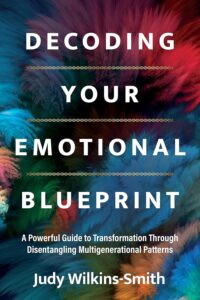
Judy Wilkins-Smith You know, you’re absolutely, absolutely spot on. I know when I went to Canada, I had a large group and I thought, okay, just so they can have a taste of it, we’ll do a very simple exercise where we set up my family system and then put them into the family system, and they can have a look, just sort of get that 3D feeling for what it feels like, because that’s about as simple as you can get. And they were all they were having aha’s all over the place in August. And they came exactly what you said. Really. That made you all, Now, I don’t get it. Exactly what you said. I’ve been at this for a long time. You have not. So I’ve forgotten the joy of that original. That that insight. And I had to step back and go, okay, I got back to what it was like the first time and take it from there.
Bill Sherman I often think about what it would take for a primary school teacher, whether they’re teaching the age, you know. Basic addition and subtraction, for example. That’s not going to change. Between year to year. But the audience changes and their discovery is a first time discovery. A Jew baker? Yep. Two plus two is still four. But if you can’t come at it with fresh excitement, you lose the audience. Yeah.
Judy Wilkins-Smith And it’s interesting to hold the dichotomy with that because two plus two equals or at the same time, if I’m not growing to 13 times six times nine. To have got past two plus two are going what do we do. So it’s interesting to hold both spaces.
Bill Sherman And we’re talking a lot about shifting in this conversation, not only shifting between the pace and individual audience member needs, but across different audiences. Because as I think about it here, you could be doing introductory work with perhaps a new client and then advanced work with someone that you’ve worked with, perhaps for a couple of years, and those conversations could be back to back, and your ability to flex and pivot and be able to ramp up or ramp down the complexity and nuance of your ideas. That takes work. And it also is. Is something that you can practice intentionally, I think.
Judy Wilkins-Smith You know it does. It takes a lot of work. And I think one of the most, one of the best gifts I ever had was doing the work I do now, because when you do systemic work in constellations, if you’re not fully present and in the moment, you’re going to lose and don’t have the answer. You’ve got to allow the answer to emerge through the client, which makes it. It takes you out of your head and it allows you to travel those different complexities. But it’s the most incredible teacher because it also keeps you focused in the moment. Exactly as you said I can. I could do this. Switch around. And in 30s I’m having another conversation and I’ve got to be that focused. So it teaches you to be intentionally on when you need to be at on.
Bill Sherman And present in the moment and not letting the past interaction from the last hour influence this hour. So very, very much a mindfulness flow state meditation. All of those pieces come into, I think, some of this work.
Bill Sherman If you’re enjoying this episode of Leveraging Thought Leadership, please make sure to subscribe. If you’d like to help spread the word about our podcast, please leave a five star review at rate this podcast.com/l t l and share it with your friends. We’re available on Apple Podcasts and on all major listening apps as well as thought leadership, leverage, dot com forward slash podcasts.
Bill Sherman You also talked about something in terms of how you’ve been building your thought leadership work and practice, and you said something interesting that early on, you undervalued your own work.
Judy Wilkins-Smith Oh, yeah. How did that come about? I think a number of things culture in South Africa, we kind of lowball it a little bit because you don’t want to seem too greedy or too ambitious. I was new into it, so I had no idea what the money levels were for what I was doing. I felt very much like I was nearing $2, creating a lot of content and that little back voice was going in. Who do you think you ought to be creating this? What gives you the authority to speak the way? You’d better be careful because you overcharge for this. Somebody is going to find out. You’re. And you know, that lovely thing cost it. And I think I had that going on. It was just. Yeah. And the it.
Bill Sherman So I’ve seen two different flavors. One. Who are you? Which is that? Imposter syndrome. But I’ve also seen content insecurity. My ideas aren’t developed enough yet. Maybe they’re not as sharp as they need to be. Was it more on the internal side of you looking at yourself, or was it also hesitation around the ideas themselves?
Judy Wilkins-Smith Help me desire was more around. How do I express them? Because I can remember thinking I can’t stand doing these and learning manuals. The cat would go out one window, the family would go out the other window and I would yell at the computer. And that happen for a seven-month-old. And then after that, I think about this 1 or 2 people started saying to me, this stuff is really good. The manuals are absolutely amazing. But I kept going and one day I can remember sitting down and going, I, I’ve got to do a manual. And then this little voice inside said, oh, we can play that play again. So now you don’t know. Doing that was like, oh dear. Okay, maybe we don’t do that anymore.
Bill Sherman So it was almost that level of meta-awareness for yourself that you heard what you said. Yep.
Judy Wilkins-Smith Oh, yeah. I heard it now. And really you want to do that again? That’s going to cost us how much stress and. You want to go down that path. You’re teaching this and you’re walking that. So stop.
Bill Sherman The. So that leads to something from your framework on decision making around head, heart and gut. I want to explore that just a little bit with you, and I also want to apply it back to the story that you just shared. So head, heart and gut, if you would.
Judy Wilkins-Smith Please hit hard and gut. One of the things I know and I share and teach is that we have a system in place, and I always ask people, do you watch horror movies? Invariably the answer is low. Sometimes yes, but most times no. And I say, yeah, but you tell yourself horror stories about yourself all day long and you believe them. In other words, you want it to be aligned. Hit art and gut. You’ll hang on to it. Oh, I’m so stupid. It goes. Yeah, that’s right, you’re stupid. Don’t do that. And you’ll get just like. So we know that. What we don’t realize is that when you use it the other way around, that’s conscious manifesting. When you say. I want to do x and your heart’s really feeling it and go. Yeah, yeah. Your brain switches on and now you’re in creative brain and your gut goes, okay, now I can become your inner compass. And within those three align, you will not be unseated. You will do what it is that you want to do because I’m doing it. Every part of you is going, I’m doing it. So if I then go back to the story, they hit heart and get. The heart. The heart near what it wanted. The head sort of had an idea of how to express it, but the gut was like, oh my goodness, there are so many people who’ve done so much. Again, who do you think you aren’t? Well, that that was great, I will say, because it led me to teaching there is imposter syndrome, which is that. But if you look at it carefully, this pioneer syndrome, in other words, and may not have the answer, but I’m willing to go and look for it. And I’ve talked a lot about those two. Imposter syndrome will take you down. Pioneer syndrome elevates you.
Bill Sherman And that’s an interesting way of thinking of it, although I don’t have the answers, but I’m ready to explore what is over the horizon. What is the next possible? I like that. So. You’ve been on a journey on top leadership duty. Where do you see going next? What are the next challenges ahead that you’re trying to face?
Judy Wilkins-Smith I think the ones that I see the most often are their two leaders who push rather than inspire. I really work a lot with that because the inspire gets people so much further. The other one, and I know, I know that there are stages at which I bump up against it. But more and more I see it going in that direction is you’re not a victim. Sorry, you are not. It’s a nice idea. You are not a victim. You are always a choice. You’re only a victim with few steps that we’re all going to have a victim piece or a victim experience. But really, for me, you’re a victim when you stay stuck and you choose to stay stuck. And this is one that I’ve had to catch really carefully so that people don’t feel insulted. I am not ever denigrating or diminishing what you’ve been through. But do you want to stay there? Or do you want to use that for?
Bill Sherman Something remarkable. It is. Definitely a tricky space in terms of language. And often people will form judgments on what you mean. Before you’ve had time to unpack it. Right. So how do you introduce an idea? Without offending and driving people away. That’s tough.
Judy Wilkins-Smith Well it is. And with a victim. Peace it is. So we all have the victim experience at some point and then comes down to what are you going to do with what’s just happened? Because that’s going to keep you victim or not. And if it keeps you victim, that then becomes my work, which is the systemic work in constellations. We then get multiple generations of victims, and everybody becomes so mired in the mythology and the story and the events and the trigger that they don’t stop and look at. So if I’m not here, what’s possible? And I think for me, the what’s possible is huge, what’s possible and what’s next. If you don’t unpack victim, what tends to happen is you become the next perpetrator only ten times worse. And do you want that journey?
Bill Sherman Judy. So as we begin to wrap up, you’ve given a lot of advice, not only in terms of framing and thinking from your work, but also around the work of thought leadership and being able to speed up and slow down. I want to ask you this question. What do you wish you knew at the start up here? Solid leadership work. What would have gotten you further and. Made life easier along the way.
Judy Wilkins-Smith You know, if I look at that, I would say it’s like that. What would you tell you, young? The earlier version of you. I wish I’d have had the wisdom and. Perhaps even the courage to relax. Because I’ve discovered that’s one of the most important words in the universe when I can relax. So much more is possible. I’m more present and more aware. I said that to somebody today. Instead of going in with your shoulders high and your jaw tensed and your right hook ready? What would happen if you took a break? And went in and simply asked the question from a completely relaxed, centered point of view. And they started crying. They set me up. I’ve never thought of doing that. I wish I taught myself earlier to relax.
Bill Sherman There’s. A way into a flow state and a highly present state through that relaxed mindset, which allows both creativity in terms of reframe, reframing the problem, or finding new ways to explain an idea. As well as being able to listen much more deeply and much more engaged. And I think that’s a great place to end this conversation. Judy. What can our audience do? To relax and be in the moment with their ideas. One thank you for joining us today, Judy, and congratulations on your new book.
Judy Wilkins-Smith Thank you so much. What a lovely conversation.
Bill Sherman Agreed. Okay. You’ve made it to the end of the episode, and that means you’re probably someone deeply interested in thought leadership. Want to learn even more? Here are three recommendations. First, check out the back catalog of our podcast episodes. There are a lot of great conversations with people at the top of their game, and thought leadership, as well as just starting out. Second, subscribe to our newsletter that talks about the business of thought leadership. And finally, feel free to reach out to me. My day job is helping people with big insights. Take them to scale through the practice of thought leadership. Maybe you’re looking for strategy, or maybe you want to polish up your ideas or even create new products and offerings. I’d love to chat with you. Thanks for listening.


